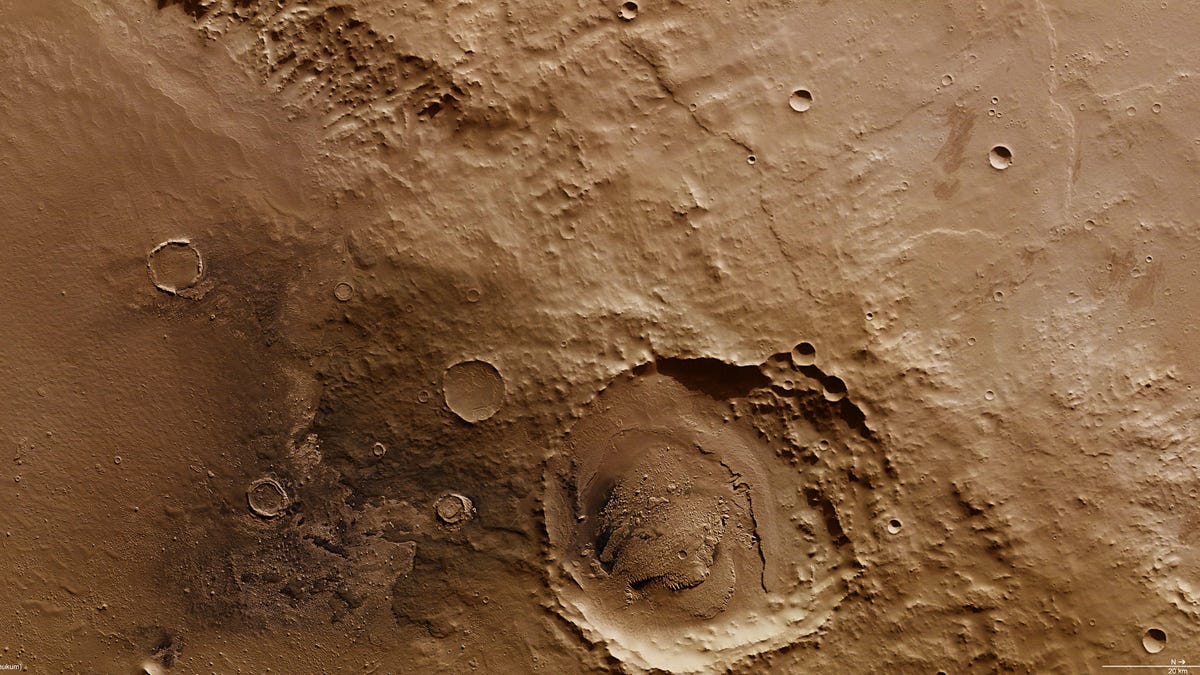Scientists find first evidence of huge Mars underground water system
The first evidence for a planet-wide underground water system will help aid future missions in our hunt for life on Mars.

Mars Express captures Schiaparelli basin on July 15, 2010.
Mars wasn't always a dusty, barren planet.
Previous modeling has demonstrated the planet was once overflowing with water that eventually retreated under the surface. But new research details the first direct geological evidence for a "planet-wide groundwater system" explaining Mars' watery history and providing new sites for future missions to hunt for signs of life.
The revelations come via some plucky Mars geologists and the European Space Agency's Mars Express Orbiter. The spacecraft, launched in 2003, circles the planet and is fitted with a number of high-resolution cameras constantly snapping images of the Martian surface. Researchers at the University of Utrecht, led by Francesco Salese, pored over these images, intently studying 24 deep craters in Mars' northern hemisphere looking for signs that water once flowed there.
Their findings, published in the Journal of Geophysical Research: Planets, show that almost all of these craters give signs that they once contained flowing water. That led the researchers to believe that Mars once had a reserve of water locked between 4,000 and 5,000 meters below Mars' sea level.
"Early Mars was a watery world, but as the planet's climate changed this water retreated below the surface to form pools and 'groundwater'," Salese said in a press release.
"We traced this water in our study, as its scale and role is a matter of debate, and we found the first geological evidence of a planet-wide groundwater system on Mars."
The craters show a wide variety of features: Channels carved by water into their walls, evidence of sapping valleys formed by erosion and the presence of shorelines and terraces created by standing water. There was also evidence of deltas -- which are formed by slow-moving water dropping sediment -- in 15 of the 24 craters. The researchers did not find evidence the water had flowed in from outside the craters, leading them to believe that they were fed from the ground up.
Because every crater showed geological remnants of water activity between approximately 4,000 and 4,800 meters, the team suggests the idea that all of the craters they studied may have been connected by the same underground water system -- though they can't be sure based on this evidence alone.
Whatever the case may be, signs of water heralds the potential discovery of life -- or the remnants of it -- on the Red Planet.
"Findings like this are hugely important; they help us to identify the regions of Mars that are the most promising for finding signs of past life," said Dmitri Titov, a project scientist with Mars Express.
And the evidence for water on Mars keeps stacking up with suggestions the planet may even contain liquid water today. In July 2018, scientists investigated the southern ice cap using the Mars Express orbiter's radar, finding that the cap may harbor a hidden lake of salty, liquid water. On Feb. 19, another team suggested the lake may be caused by recent volcanic activity from within Mars' crust, creating a subsurface lake that could support life.
Finding that life will be the focus of numerous missions in the future, including that of ESA's Rosalind Franklin rover, which is expected to land on Mars in 2020.

